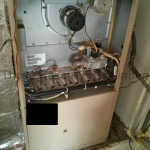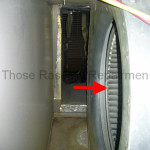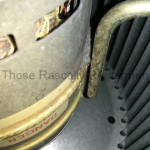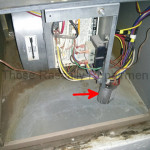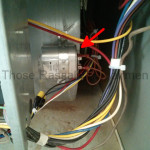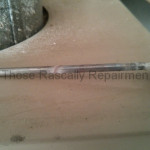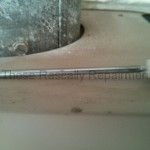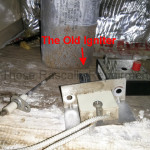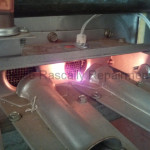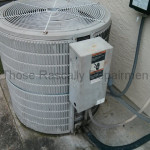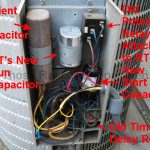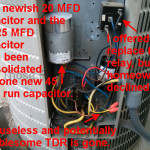Repairmen say the darndest things. One of my favorites is “It’s on its last legs.“, as though the furnace or air conditioner is a centipede that’s down to its last two legs. We’ve all heard that “throwing good money after bad” is, well, bad. And lately I’ve heard about quite a few repairmen referring to the very repairs they make as “Band-Aids”. Some companies have even made that genericised trademark the official name of their repair.
So why are these commonplace sayings “darnedest” when said by repairmen? Because they’re being used as FUD. Most repairmen are not repairmen that want to repair. They’re replacemen that want to replace. When a replaceman senses resistance to buying a new furnace or air conditioner now, he starts softening the homeowner up for that eventuality with ominous predictions wrapped in familiar colloquialisms.
Of course a forecast of frequent failure doesn’t impress unless said failures come to fruition. And they do, but not because a repairman can predict your equipment’s future. Rather, in many cases the equipment’s future is what the repairman makes of it. To illustrate this I give you yet another story of woe sponsored by our old friend The Requisition Technician.
Last winter Req Tech replaced the furnace’s motor, capacitor and wheel. (The actual motor, capacitor and wheel are pictured in the slideshow at the bottom of this page.) It was then that he called his $630 repair a Band-Aid, implying that future failures were imminent. Then, sure enough, the following summer he replaced the air conditioner’s start capacitor and one of its run capacitors. Then this winter, today in fact, I replaced the furnace’s motor mount.
It seems his prediction is coming true. After all, there have been two additional repairs since he made the first Band-Aid repair 14 months ago. However, as with all self-anointed soothsayers, all is not as it seems:
- Capacitors are infamous for wearing out. Had Req Tech checked those very old start and run capacitors during the first service call, he almost certainly would’ve replaced them – thereby eliminating the second service call.
- Blower wheels are usually replaced because they start vibrating. That vibration stresses the motor mount. That stress might have been evident on the first service call and, if so, it could’ve been replaced then – thereby obviating the third service call as well.
As you can see, three service calls could have been two. They could’ve even been just one. But then one lonely service call doesn’t do much to soften the homeowner towards the idea of installing new equipment. So one was three. In fact, one service call could have been a half dozen – but I’m getting ahead of myself.
A reasonable skeptic might respond by saying, “But you don’t know for certain that the motor mount was showing stress or that the capacitors were weak on the first service call.” Good point. Not to worry. Req Tech had plenty of other potential problems to make his prediction prove out.
- The furnace capacitor he installed was dangling by its wires (pictured below). It could have come loose, thereby causing the new blower motor to overheat.
- The furnace had an 18 year old igniter (also pictured below). That was a failure waiting to happen. Replacing it is a relatively inexpensive add-on to other work, but Req Tech didn’t mention it.
- A dirty flame sensor can cause erratic operation. It only needs to be cleaned once every 5 to 10 years. By the looks of it, that didn’t happen last winter either (below).
- The AC’s old time delay relay wasn’t needed. The thermostat handles that function now. That too was a failure waiting to happen. It took two minutes to remove it. It should’ve been removed last summer.
- Just one of the AC’s two ancient run capacitors was replaced. RT should have replaced both. It would’ve cost an extra nine dollars in materials.
- RT replaced the AC’s start capacitor, but not the potentially problematic relay it’s attached to. Replacing them separately is an archaic practice. Modern start capacitors come with an integrated relay.
To summarize: On the first service call fourteen months ago, The Requisition Technician repaired one problem. He had eight more possibly preventable potential problems in front of him. They were ignored. Two of those potential problems turned into actual service calls. I nipped the other six in the bud.
Had the homeowner stayed the Req Tech course, he might have had even more of those potential problems turn into actual service calls. After four or five preventable but not prevented repairs, just about any homeowner would have been thoroughly softened to the idea of buying new equipment. In other words, RT would have engineered quite the soft sale for himself.
Click the first picture to open the gallery and see the descriptions.

